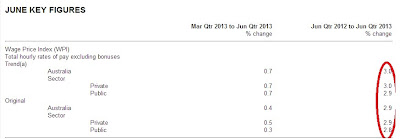Silly auction prices not good news for anyone other than Sydney vendors: Pete Wargent
Total housing loan approvals are heading back towards record heights of above $20 billion as Aussies pile back into real estate.
There have been a few reports of the Sydney market going "ballistic" this weekend and silly prices being paid for standard properties (even more so than usual, I mean) at way above reserve prices.
This is not good news for anyone really, unless you're a Sydney vendor who has decided to move to the bush or take a 'seachange'.
Note in the chart below how the increase in housing loan approvals is being driven by investors and repeat buyer owner-occupiers.
The level of first homebuyer (FHB) activity has remained subdued to date.
If market prices continue to increase without a pick-up in FHB activity, this will not be a happy outcome and home ownership levels will naturally decline.
With people tending to move dwelling more frequently than in the past, some younger buyers may elect instead of buying a place of residence, to rent and buy an investment property.
This has the advantage of reducing transaction costs as you don't have to pay stamp duty each and every time you move house, and also allows younger investors to capitalise on Australia's negative gearing tax legislation (although any potential first homeowners grant may be foregone if the property is not lived in by the purchaser).
Younger buyers can be tempted to undertake this strategy in order to get a foot on the housing market ladder.
The downside effect on market forces is that the housing market gradually has a proliferation of investors with a buy-and-hold mindset, which can 'clog up' the existing housing stock for potential homebuyers and possibly push prices upwards.

Yet another year of wages growth in Australia has been reported by the Australian Bureau of Statistics.
The slightly slower growth mirrors the slower overall growth in the economy in recent quarters.
As expected, the mining sector effectively led the way with wages growth (although some other sectors such as healthcare also did well, and in the public sector electricity, gas and waste services likewise), while wages in retail trade, education and training and real estate services remained weak.
Source: ABS
In fact, the ABS numbers don't take account of bonuses, so the mining sector is likely to be stronger still.
There are plenty of projects at or approaching the end of the construction phase for which very healthy completion bonuses are handed out (bonuses are not captured by the ABS data which is designed to represent the ongoing trend).
Private sector wages growth of 3.0% year-on-year was slightly higher than public sector growth of 2.9% year-on-year.
Wages growth of 3.0% is not particularly strong, but it is still growth.
As sure as night follows day, there will be people who cite examples of pay rises not being awarded over the last year or two, which obviously misses the point of ABS data.
The ABS selects a representative sample of employees and extrapolates the results to measure changes in the price of wages and salaries in the Aussie labour market. It doesn't expect to recognise that someone's brother's cousin's ex-boyfriend got a pay freeze since June 2011 (except insofar as that is representative of the norm).
So, wages growing at a reasonable enough clip of 3.0% which will continue to push things along nicely.
Pete Wargent is the co-founder of AllenWargent property buyers (London, Sydney) and a best-selling author and blogger. His new book 'Four Green Houses and a Red Hotel' is released on 1 September 2013.